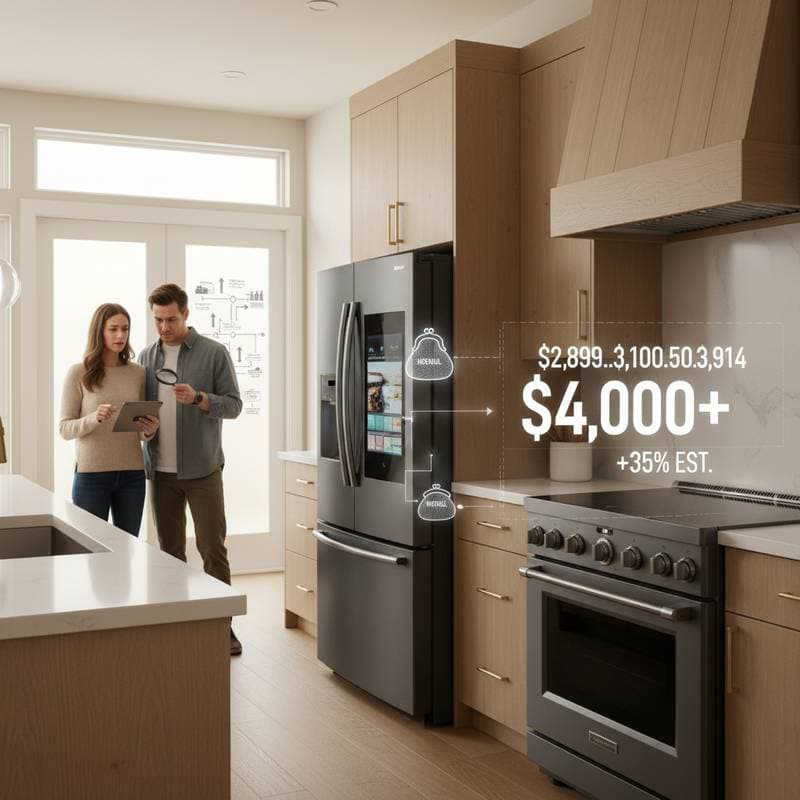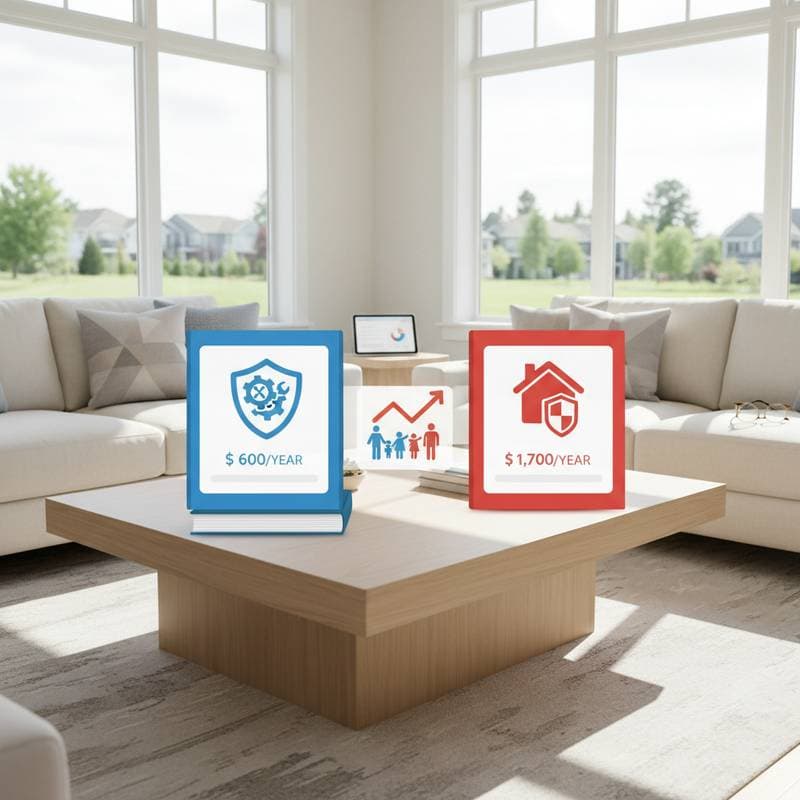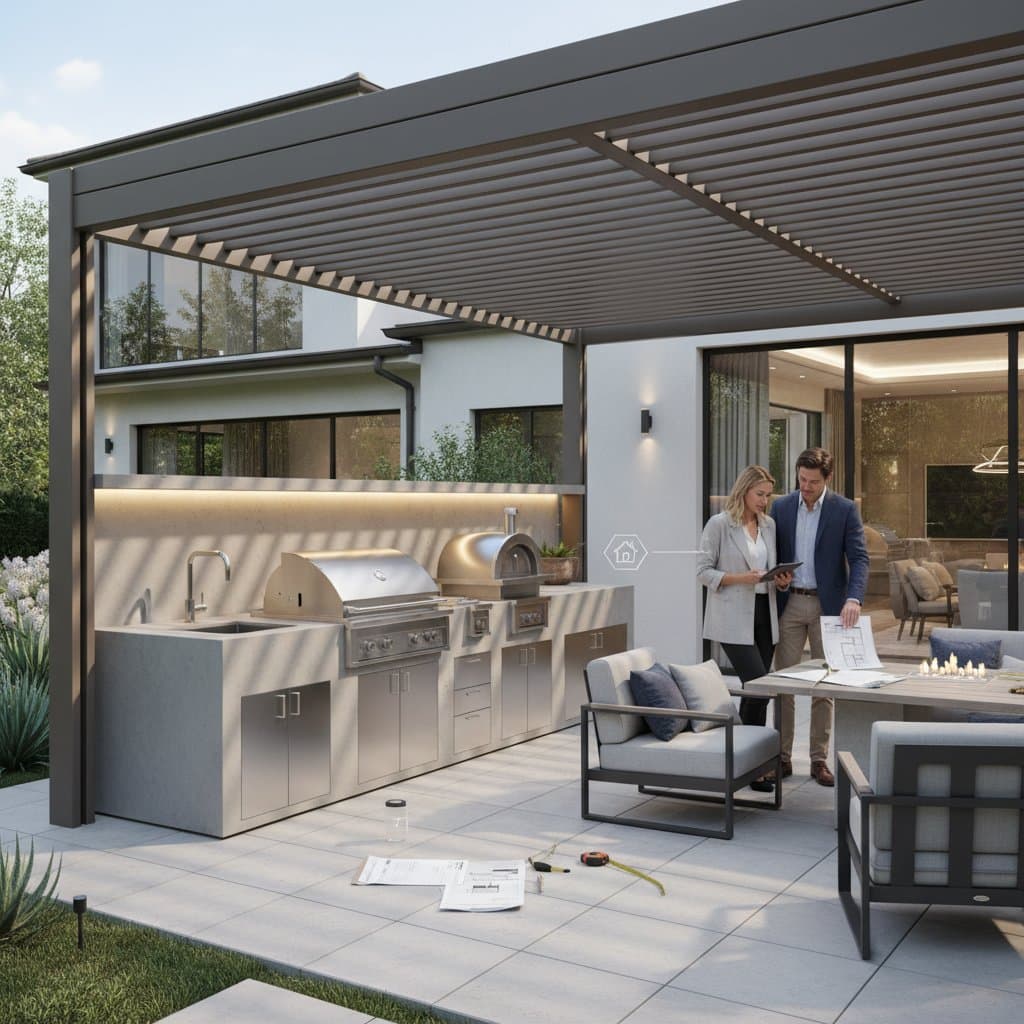Luxury Vinyl Plank: 2025 Installation Cost Reality
Quick Take
Luxury vinyl plank flooring replicates the appearance of hardwood at a fraction of the expense and without extensive maintenance requirements.
- Installation costs average $3 to $10 per square foot, influenced by material quality and site preparation.
- Variations arise from subfloor conditions, room layout, and surface finishes.
- DIY installation suits floating plank systems, while glued or intricate patterns require professional expertise.
What It Is
Luxury vinyl plank consists of a synthetic material engineered to imitate natural wood grain. The construction features a rigid core for stability, a high-resolution printed design layer for visual authenticity, and a protective clear wear layer coated with polyurethane for longevity. Installation options include floating click-lock systems for simplicity or adhesive bonding for enhanced security. This flooring withstands water exposure, resists scratches and dents, and proves suitable for kitchens, basements, and rental properties.
Pros and Cons
Pros
- Resists water effectively, making it appropriate for kitchens and bathrooms.
- Cleans easily using mild soap and water.
- Provides a warmer sensation underfoot compared to ceramic tile.
- Offers diverse styles, ranging from rustic oak to contemporary gray tones.
- Presents a cost-effective alternative to solid hardwood or natural stone.
Cons
- Cannot be refinished easily after sustaining deep scratches or gouges.
- May fade when exposed to prolonged direct sunlight.
- Lower-quality installations can produce a hollow sound underfoot.
- Certain adhesives and backings release mild odors initially after installation.
- Performs poorly on uneven or flexible subfloors.
When to Use It or When It Fails
Use LVP when:
- A wood-like aesthetic is desired in areas prone to moisture.
- Rapid installation is needed without extensive demolition.
- Budget constraints limit options to affordable materials.
- Daily use involves pets or children that may cause wear.
It fails when:
- The subfloor exhibits unevenness or persistent dampness.
- Potential home buyers prioritize authentic solid hardwood.
- Inexpensive planks are selected for high-traffic zones.
- Heavy furniture remains in place for extended periods without protective pads.
Step-by-Step: Installing Luxury Vinyl Plank
Tools and Materials
- Tape measure
- Utility knife equipped with fresh blades
- Rubber mallet
- Pull bar and tapping block
- Spacers
- Straightedge
- Level
- Underlayment, if specified by manufacturer
- Personal protective equipment: gloves, knee pads, eye protection
Time Estimate: One to three days for a standard room
Difficulty Level: Moderate for floating installations; high for adhesive applications
1. Prep the Subfloor
Remove all dust and debris by vacuuming and mopping thoroughly. Inspect for irregularities exceeding 1/8 inch over any 6-foot span. Apply leveling compound to fill depressions and sand protrusions to achieve flatness. A smooth, dry subfloor ensures proper interlocking and prevents future issues.
2. Acclimate the Planks
Position unopened boxes in the installation area for a minimum of 24 hours. This adjustment to ambient temperature and humidity minimizes the risk of expansion gaps or warping post-installation.
3. Plan the Layout
Calculate the room's width and divide by the plank width to determine the final row dimension. Shift the starting row if the end row measures less than 2 inches wide. Balanced cuts on opposite walls enhance the overall appearance and stability.
4. Install the First Row
Position spacers along wall edges to accommodate natural expansion. Align the first plank with its tongue side against the wall. Connect subsequent planks end-to-end by snapping firmly, then cut the final piece to fit using a utility knife or fine-tooth saw.
5. Stagger the Joints
Start the subsequent row with a remnant from the prior row's end to offset seams. Maintain at least 6 inches between adjacent end joints. Secure ends before angling and pressing into the preceding row for a tight lock.
6. Continue Across the Room
Proceed row by row, employing a tapping block and mallet to close joints securely. Verify alignment periodically with a level to maintain squareness. Make precise cuts around obstacles such as door frames and vents.
7. Finish the Edges
Withdraw spacers once the field is complete. Secure baseboards or quarter-round molding to conceal expansion gaps. Perform a final cleaning with a damp mop to remove any residue.
8. Inspect and Test
Traverse the floor methodically to identify any yielding areas or loose connections. Adjust and secure any imperfect joints. Examine wall gaps and transition points, addressing issues prior to replacing furniture.
9. Clean Up and Dispose
Gather and dispose of scraps and packaging materials responsibly. Recycle vinyl offcuts through local facilities if available. Clean tools with a mild solution and allow 24 hours of curing time for adhesive applications before introducing heavy loads.
Costs
Typical Range: $3 to $10 per square foot for complete installation.
Factors That Increase Costs:
- Wear layers exceeding 20 mil thickness for added protection.
- Intricate patterns or varying plank widths requiring skilled labor.
- Necessity for subfloor repairs, leveling, or removal of existing coverings.
- Adhesive or herringbone installations demanding exact precision.
- Elevated labor rates in metropolitan regions.
Factors That Decrease Costs:
- Self-installed floating click-lock systems.
- Simple linear layouts with few custom cuts.
- Bulk purchases of mid-tier brands.
- Installation over prepared concrete or plywood substrates.
When Replacement Outweighs Repair:
Seam separation, edge lifting, or subfloor moisture infiltration often necessitate full section replacement rather than patching. Once the wear layer degrades, surface restoration becomes impossible, making proactive replacement more economical.
DIY vs Pro
Suitable for DIY If:
- Precise measuring and cutting skills are present.
- The subfloor remains level and free of moisture.
- Floating click-lock planks are selected.
Require Professional Installation When:
- Evidence of moisture, such as discoloration or softness, appears.
- Adhesive or patterned designs are planned.
- Transitions across doorways or staircases are involved.
- The area surpasses 500 square feet, requiring expansion joints.
Professional Advantages:
Contractors employ moisture meters for accurate assessments, apply sealants in vulnerable zones, and utilize weighted rollers for adhesive adhesion. They ensure clean jamb trims and seamless transitions that integrate with existing trim work.
Maintenance and Prevention
Frequency: Light cleaning weekly; thorough washing every few months.
Routine Tasks:
- Sweep or vacuum using a soft-bristle attachment to eliminate abrasive particles.
- Mop with warm water and a cleaner formulated for vinyl surfaces.
- Refrain from applying waxes or polishes that may cause buildup.
- Affix felt protectors to furniture bases.
- Deploy area rugs near entrances to capture tracked-in debris.
Desired Result: A resilient surface free of scratches that preserves its original sheen for more than ten years.
Additional Advice: Address sticky or oily spills immediately upon occurrence. Although water-resistant, LVP does not resist staining indefinitely.
Alternatives
Laminate Flooring
Ideal for low-moisture environments, laminate costs slightly less but risks swelling from liquid exposure. It delivers crisp wood imagery through advanced embossing techniques.
Engineered Hardwood
Preferred for enhancing property value, this option layers thin hardwood veneers over plywood cores. Higher upfront costs accompany the need for periodic refinishing.
Ceramic Tile
Optimal for full bathrooms, ceramic provides complete waterproofing and exceptional durability, though it feels cold and demands intensive, irreversible installation.
FAQs
Is luxury vinyl plank waterproof or just water resistant?
Standard LVP offers water resistance, allowing brief spill contact without damage. Waterproof variants incorporate PVC cores to block moisture penetration at joints.
Can you install LVP over old tile or vinyl?
Installation is feasible over level, clean hard surfaces with floating planks. Avoid overlaying on soft, damaged, or delaminating materials.
How long does luxury vinyl plank last?
Planks featuring 20-mil wear layers endure 15 to 20 years under regular use. Inferior products may deteriorate sooner in demanding locations.
Does it need underlayment?
Certain planks include integrated padding; otherwise, add underlayment for noise reduction or slight unevenness correction. Adhere to manufacturer guidelines to preserve warranty coverage.
Will it raise my floor height too much?
Floating LVP typically adds 1/4 to 1/2 inch; verify clearances for doors and adjoining floors beforehand.
What if the planks separate over time?
Fluctuations in temperature may create gaps; realign using a tapping block. Persistent separation signals subfloor irregularities or inadequate expansion allowances.
Pre-Installation Checklist
- Measure the space and include a 10 percent allowance for waste from cuts.
- Evaluate subfloor for flatness and dryness using a level and moisture test.
- Select plank thickness and wear layer based on anticipated foot traffic.
- Acquire underlayment or adhesive as per product specifications.
- Assemble tools including utility knife, spacers, tape measure, and tapping block.
- Determine layout pattern and plank orientation prior to initial cuts.
- Incorporate expansion gaps along perimeter walls.
- Clean thoroughly post-installation and apply protective pads to furniture.
Finalizing Your Flooring Choice
Luxury vinyl plank strikes an optimal balance between aesthetic appeal, resilience, and affordability. Actual expenses reflect selections in materials and preparation efforts. Opt for thicker cores and textured surfaces in premium ranges to achieve a more authentic wood feel and extended service life.
For those with basic skills and a prepared space, floating LVP installation represents a manageable weekend endeavor. Complex conditions like moisture or irregularities benefit from professional intervention to avoid rework and ensure durability.
Examine samples in your home's lighting to assess texture, edge detailing, and locking mechanisms. Review warranties covering water resistance and compatibility with underfloor heating. The ideal choice aligns with daily routines while respecting financial limits.
Sustain the floor through routine care and stable environmental controls. Prevent damage by avoiding furniture drag and using mats in wear-prone spots. Begin with a subfloor assessment, budget allocation per square foot, and installation method decision to secure lasting performance and ease.



